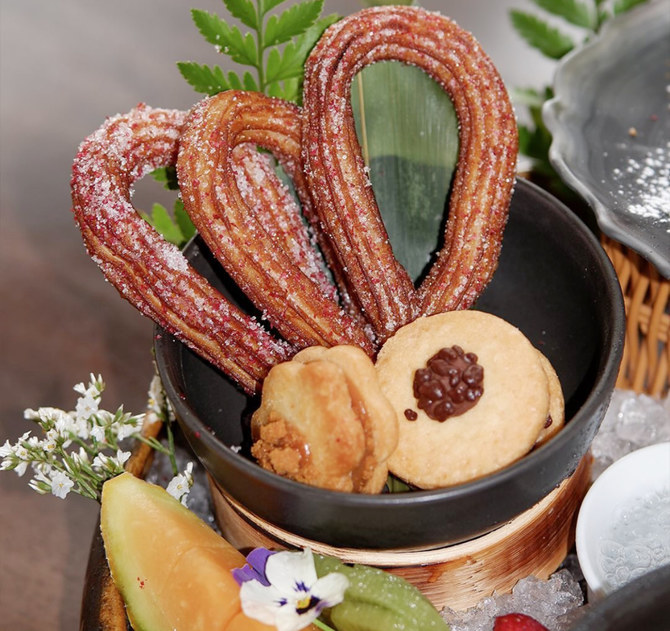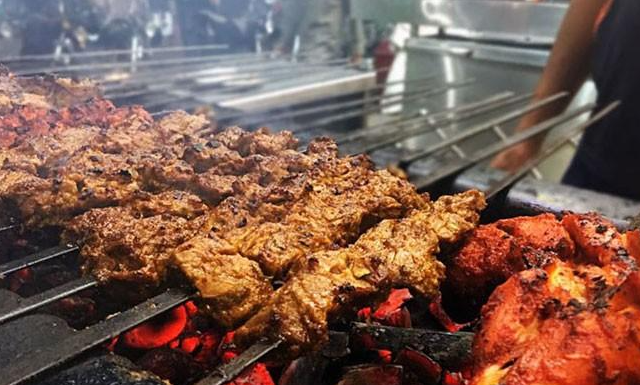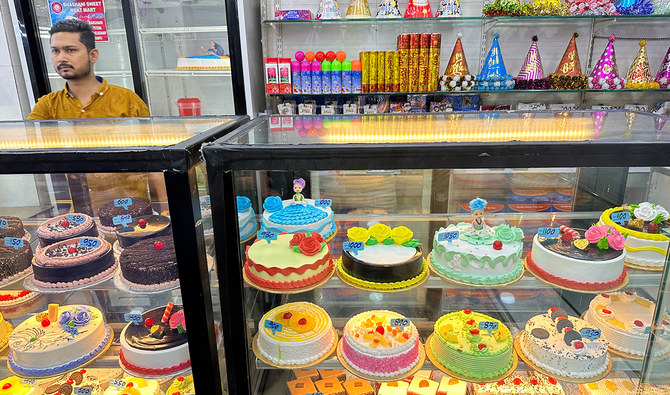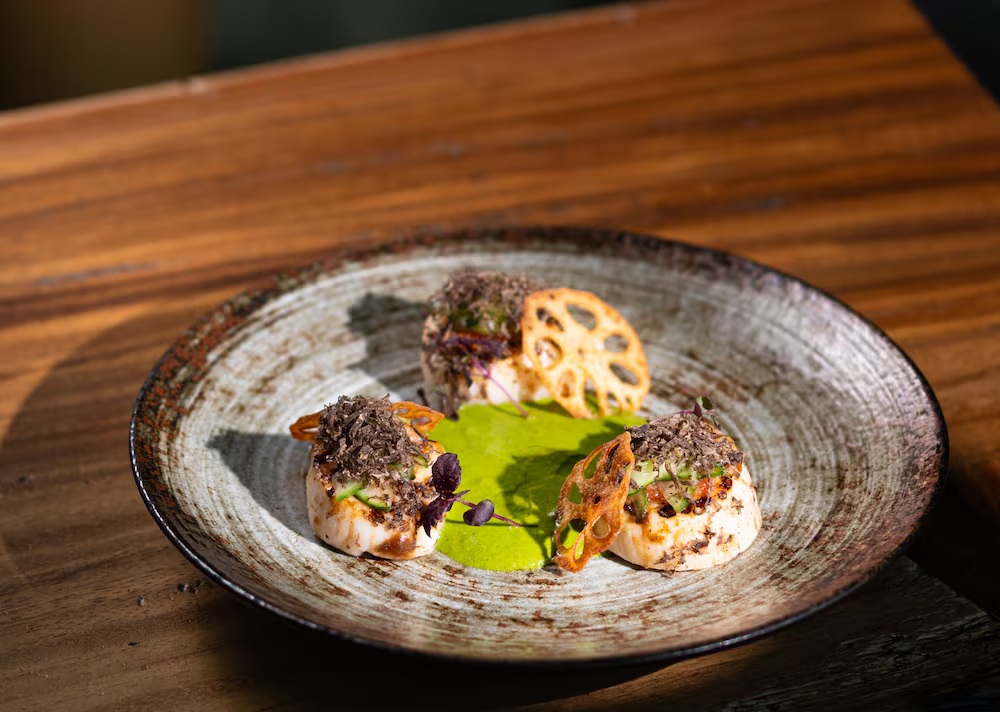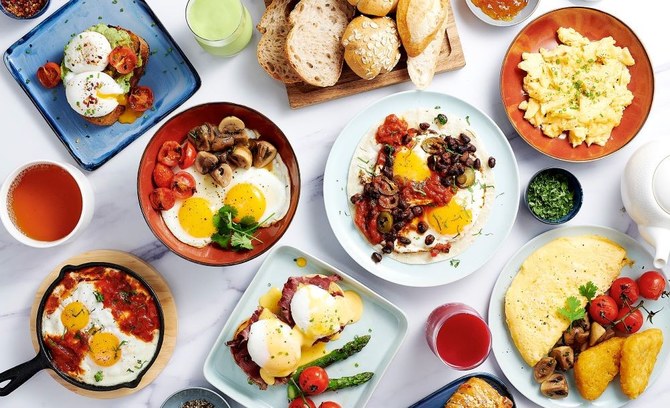Monitoring Desk
The best thing about working in food – equal to, not after the food itself – is the people. Anyone who works in restaurants knows that you have the whole world around the stove. The food brings the people, and the people, in turn, bring their food. One such person in the Ottolenghi world is our executive chef Calvin Von Niebel, whose talent has no bounds and who loves to share his knowledge and skills with anyone who asks. Today’s dishes were created by Calvin, inspired by the food he grew up eating in Durban, South Africa. Luckily for me and the test kitchen team, we all got to taste it, taste it again and learn a thing or two along the way.
Durban bunny chow
Bunny chow is traditionally made with mutton and served in hollowed-out bread. It’s totally comforting (as well as being the perfect antidote to a heavy night out, according to Calvin). If you prefer, serve the curry alongside rice instead of inside the rolls. If you can, it’s best to make the curry a day ahead, so the flavours develop.
Prep 35 min
Cook 2 hr 30 min
Serves 4
70g ghee, or olive oil
750g stewing lamb or mutton on the bone (scrag, for preference), cut into 3cm chunks
3 onions, peeled and roughly chopped (480g)
30g piece fresh ginger, peeled and finely grated
6 garlic cloves, peeled and crushed
3 mild green chillies, cut at an angle into 1cm-thick slices
4½ tbsp leaf masala (see recipe below)
¾ tsp ground turmeric
2 cinnamon sticks
3 whole star anise
2 fresh bay leaves
6 large plum tomatoes, roughly grated and skins discarded (750g)
750ml chicken stock
Salt
550g maris piper potatoes (about 3-4), peeled and cut into 3cm chunks
2 carrots, peeled and cut into 3cm chunks (150g)
20g coriander, leaves picked and stalks finely chopped
4 soft white bread rollsAdvertisement
For the curry leaf oil
30g ghee, or olive oil
4 sprigs fresh curry leaves – about 20 leaves
For the carrot sambal
3 carrots, peeled and shaved into ribbons with a peeler (200g)
1 small red onion, peeled and finely sliced (100g)
3 tbsp white-wine vinegar
½ garlic clove, grated
10g piece fresh ginger, peeled and finely grated
1 tsp soft light brown sugar
1 bird’s eye chilli, thinly sliced (if you don’t like heat, leave it out)
1 tbsp lime juice
2 tsp olive oil
Put a 28cm-wide, heavy-based casserole pan on a medium-high heat. Heat 35g ghee until it’s searing hot, then brown the lamb on all sides in two or three batches, so as not to overcrowd the pan. Once seared and nicely coloured, transfer to a medium bowl and repeat with the remaining lamb.
Add the remaining 35g ghee to the pan with the onions and cook, stirring frequently, for 20 minutes, until softened and golden brown. Add the next eight ingredients, stir well and cook for another three to five minutes, until fragrant. Return the lamb and any juices from the bowl to the pan, then stir in the tomatoes, chicken stock and a teaspoon and a half of salt.
Add the potatoes and carrots to the pot, bring up to a hard simmer, then turn the heat down low, cover the pan and cook, stirring occasionally, for two and a half hours, until the meat is tender; take off the lid for the last 20 minutes, so the sauce thickens. Leave the curry to sit, uncovered, for 30 minutes, to give the flavours a chance to mingle.
Heat the oven to 220C (200C fan)/425F/gas 7. While the oven’s warming up, make the carrot sambal. Put the carrots, onions, vinegar, half a teaspoon of salt, the garlic, ginger, brown sugar and chilli in a bowl, toss to combine, then leave to steep for 30 minutes. Squeeze out the mixture with your hands, to remove as much excess liquid as possible, then mix with the remaining ingredients and the finely chopped coriander stalks.
While the carrot mix is pickling, make the curry leaf oil. In a small frying pan, heat the ghee on a medium heat and, once hot, add the curry leaves, fry for about five minutes, until dark green, then take off the heat and set aside.
Put the bread rolls on a medium oven tray, brush them all over with some of the curry leaf oil, then warm in the oven for five minutes. Cut off the tops of the rolls, like giving them little hats, then hollow out the rolls. Spoon in a generous amount of the curry, followed by some of the sambal, a spoonful of the ghee and some curry leaves. Pop the tops of the rolls back on and serve hot with the remaining curry leaves, coriander and condiments on the side.
- UK readers: click to buy these ingredients from Ocado
Durban leaf masala

Yotam Ottolenghi’s Durban leaf masala.Advertisement
Leaf masala is a spice blend that’s the base for a variety of South African curries. The choice of protein changes – chicken, fish, prawns all work well – but it’s also lovely just as it is, sprinkled on slices of raw pineapple and eaten, preferably, on the beach. As with all spice mixes, there are all sorts of variations: this is Calvin’s, which he’s based on the very popular Durban spice brand Gorima’s.
Prep 10 min
Makes 1 small jar
3 fresh bay leaves, stems removed
1 tbsp dried fenugreek leaves
5 tbsp fresh curry leaves (20g)
2 tbsp coriander seeds
1½ tbsp cumin seeds
10g cardamom pods, lightly bashed open in a mortar to get 1½ tsp seeds
1 tbsp fennel seeds
1 tsp fenugreek seeds
4 whole cloves
1 cinnamon stick
5 tbsp (50g) Kashmiri chilli powder (or any other mild chilli powder)
1 tsp ground ginger
1½ tsp smoked paprika
Blitz the bay leaves and fenugreek in the small bowl of a food processor or a spice grinder until finely chopped to the size of confetti. Add the curry leaves, pulse about three times, until coarsely broken, then tip out into a medium bowl.
Put all the other spices in the food processor and blitz until very well ground. Add the ground spices to the leaves in the bowl, mix well and transfer to an airtight jar. The spice mix will keep for up to three months.
- UK readers: click to buy these ingredients from Ocado
Melktart

Yotam Ottolenghi’s South African melktart.Advertisement
Melktart, AKA milk tart, is a very popular South African dessert. It’s usually made with a sweet pastry base and sometimes tennis biscuits, which are an institution in that country – they are the equivalent of Britain’s digestive tea biscuit, but with coconut in the mix, too. Here, Calvin improvises by making his own. The milk really benefits from the overnight infusion, while the base can also be made the day before.
Prep 20 min
Infuse 1 hr-overnight
Cook 30 min
Set 3 hr
Serves 8
850ml whole milk
6 cardamom pods, bashed open in a mortar
1 cinnamon stick
1 whole star anise
⅓ vanilla pod, split, seeds scraped out and pods reserved
2 eggs
100g caster sugar
30g cornflour
For the biscuit base
175g unsalted butter
200g digestive biscuits, finely crushed
75g desiccated coconut, toasted
2 tbsp demerara sugar
¼ tsp ground cardamom seeds (from about 5 pods)
Salt
For the dusting
1 tsp ground cinnamon powder
¼ tsp freshly grated nutmeg
Put the milk and all the spices in a large saucepan, bring up to a gentle simmer on a medium-high heat and cook for 10 minutes. Take off the heat, leave to cool then put in the fridge to infuse overnight (or for at least an hour).
Heat the oven to 200C (180C fan)/390F/gas 6. Melt the butter in a small saucepan on a medium heat, then cook, stirring frequently, for three to four minutes, until the butter is brown and nutty. Take off the heat and leave to cool.
Put the biscuits in the large bowl of a food processor and blitz until finely crushed. Put the crushed biscuits in a large bowl with all the other ingredients for the biscuit base, a tablespoon of cold water and a quarter-teaspoon of salt, and mix to combine. Line a large round 25cm-wide x 3cm-deep tart tin with greaseproof paper and scatter in the biscuit mix to cover the base. Using the back of a spoon, firmly press down the biscuit mixture over the bottom and up the sides, to create a uniform base about ½cm thick. Bake for 10 minutes, until the base is deeply golden, then remove and leave to cool for 30 minutes.Advertisement
To make the tart filling, wipe clean the biscuit bowl and strain the milk into it; discard the solids. Pour the milk back into the pan and on a medium heat bring it gently back up to a very low simmer.
In the same bowl, whisk the eggs, sugar, cornflour and an eighth of a teaspoon of salt until smooth.
Once the milk is hot, pour roughly a third of it into the egg mix, whisking continuously as you pour. Sieve this mixture back into the milk pan, return to the heat and whisk continuously for three minutes, until the custard starts to thicken and form soft ribbons when falling from the whisk. Tip the custard over the cooled biscuit case, then use a spatula to spread it evenly. Leave at room temperature to cool down for about 30 minutes, then refrigerate for three hours, or overnight, until set but with a slight wobble.
When you’re ready to serve, sprinkle the top with the cinnamon and nutmeg – it might seem like a lot of spice, but it works – then cut into slices.
Courtesy: theguardian




